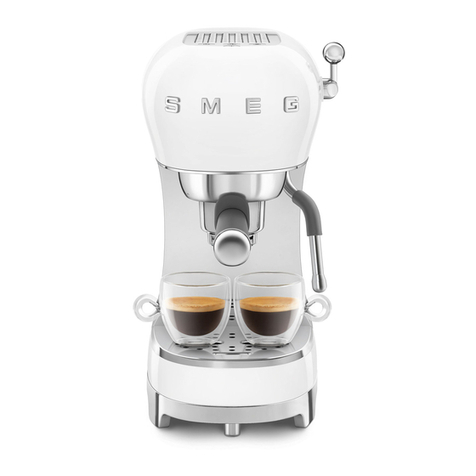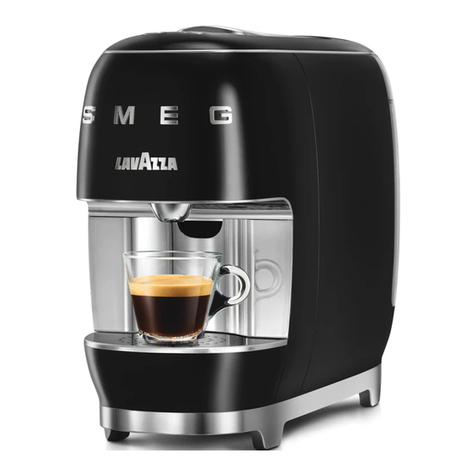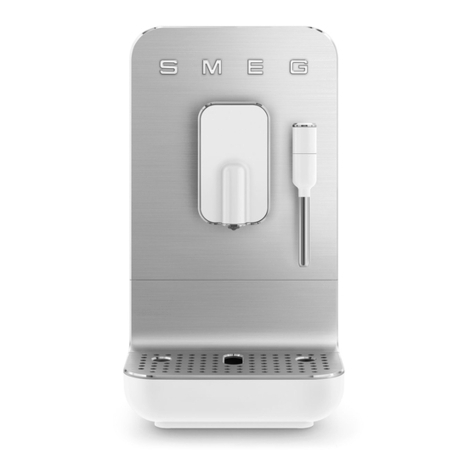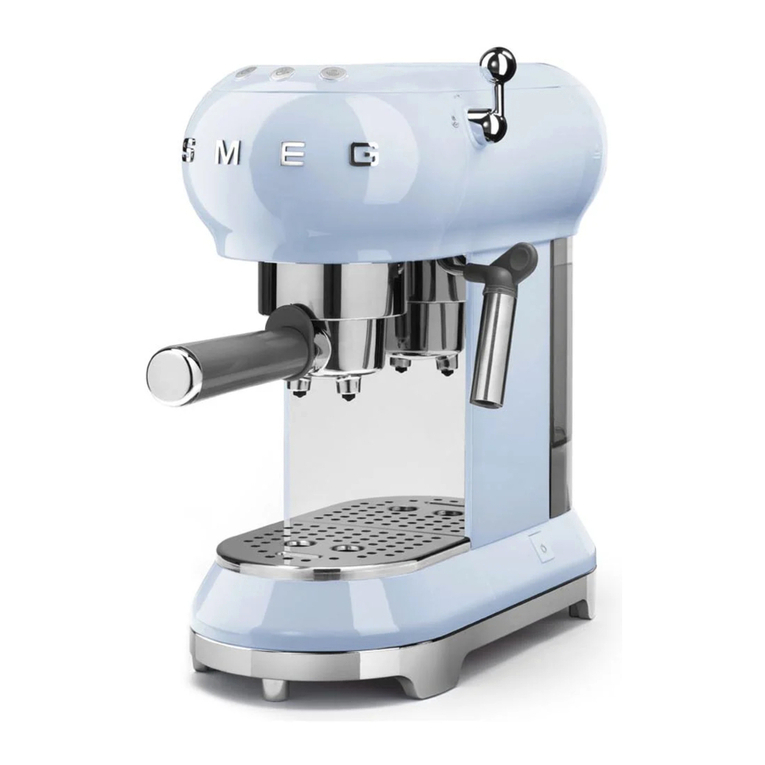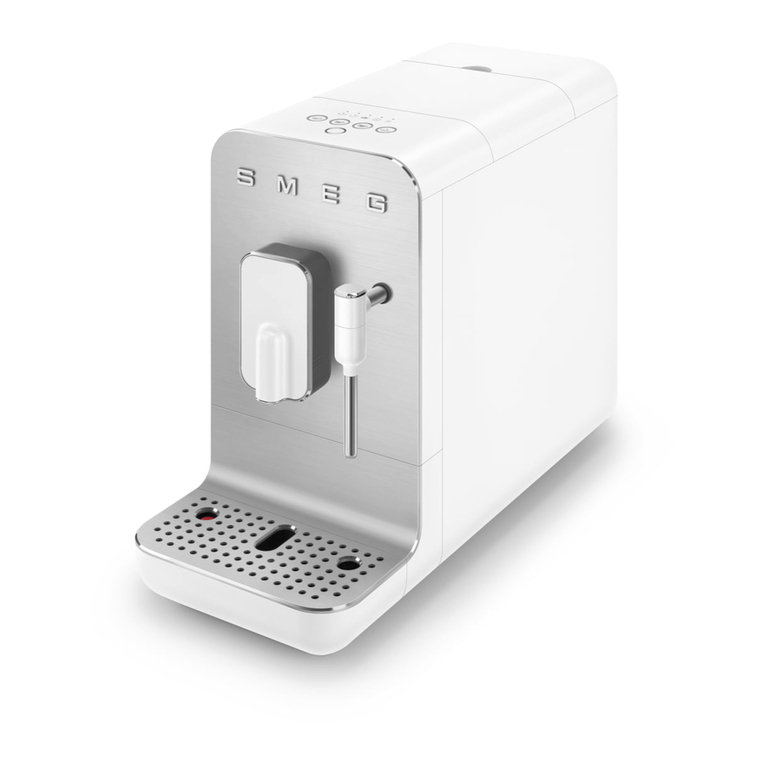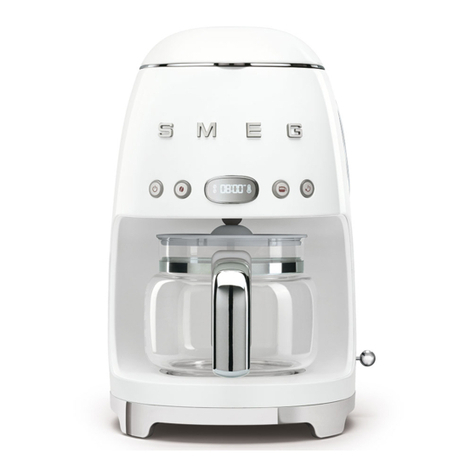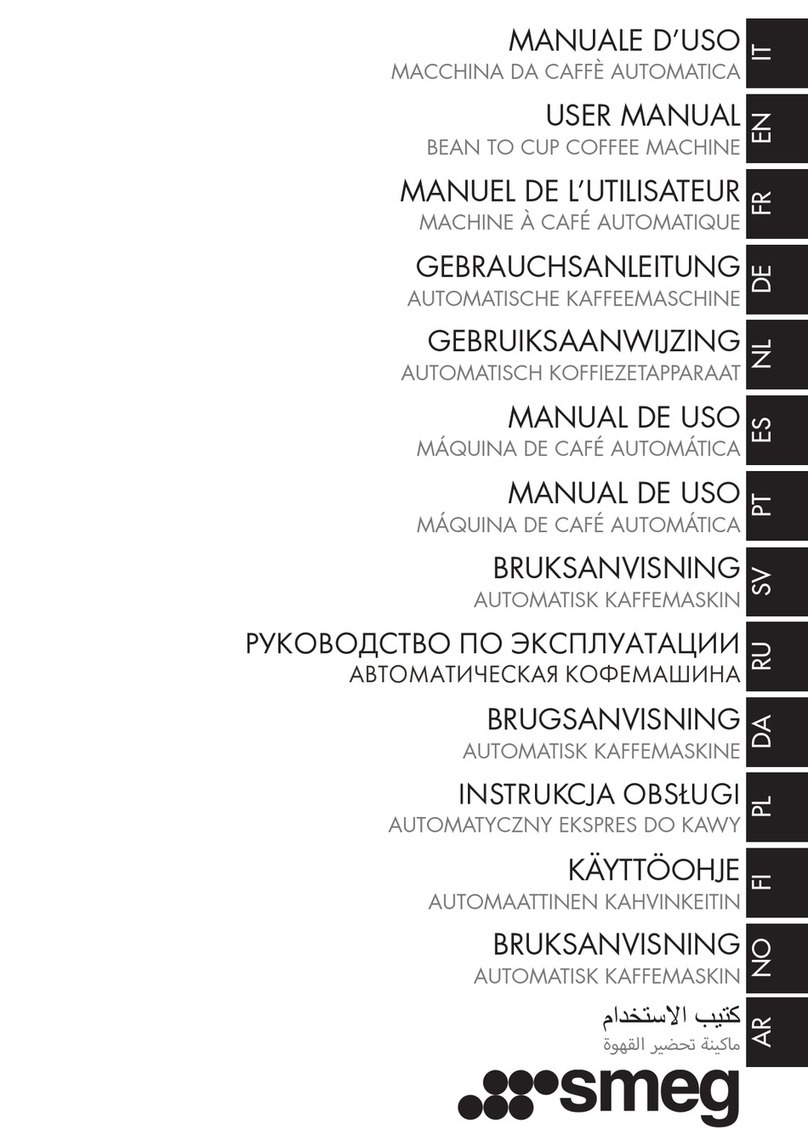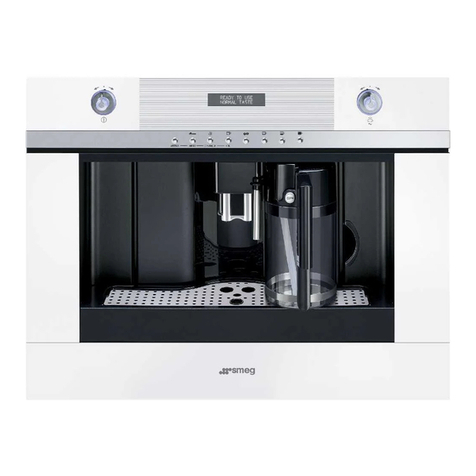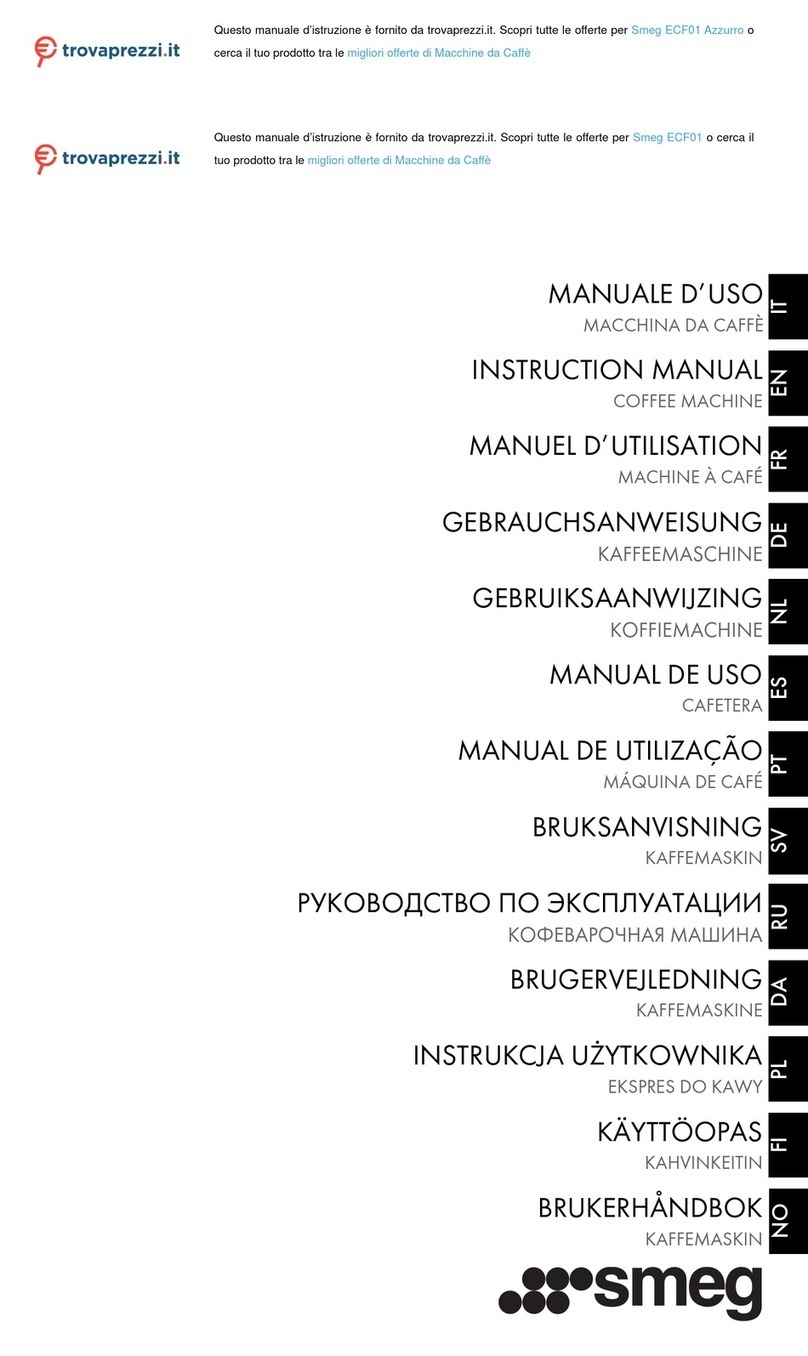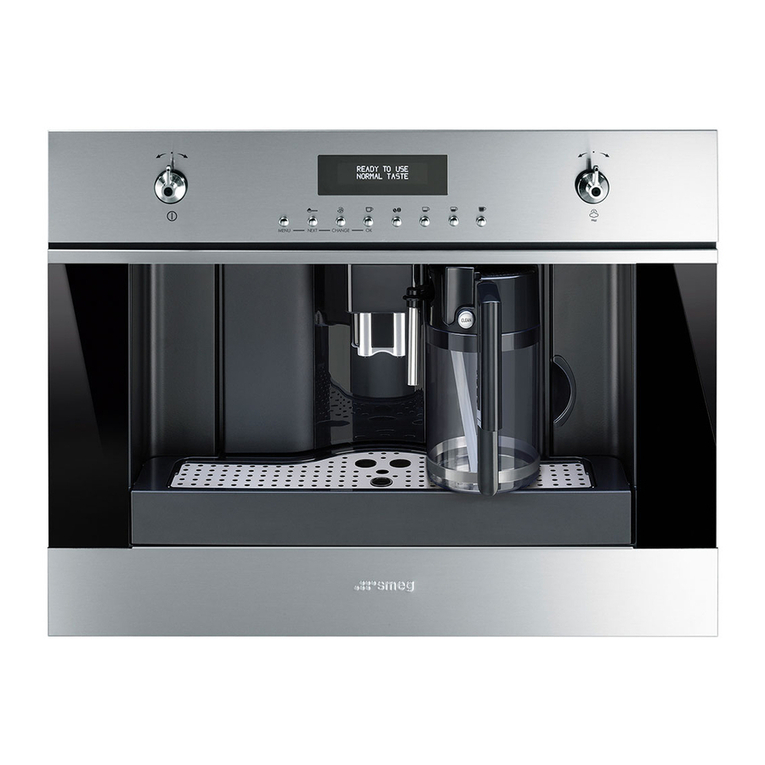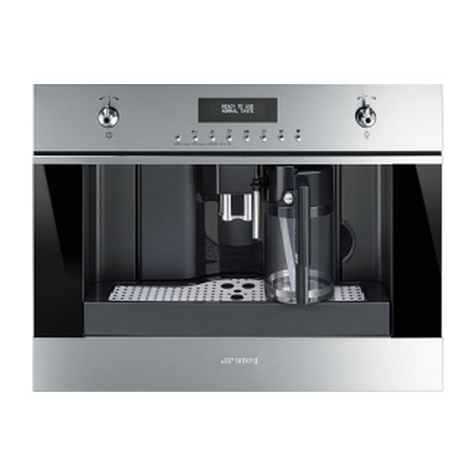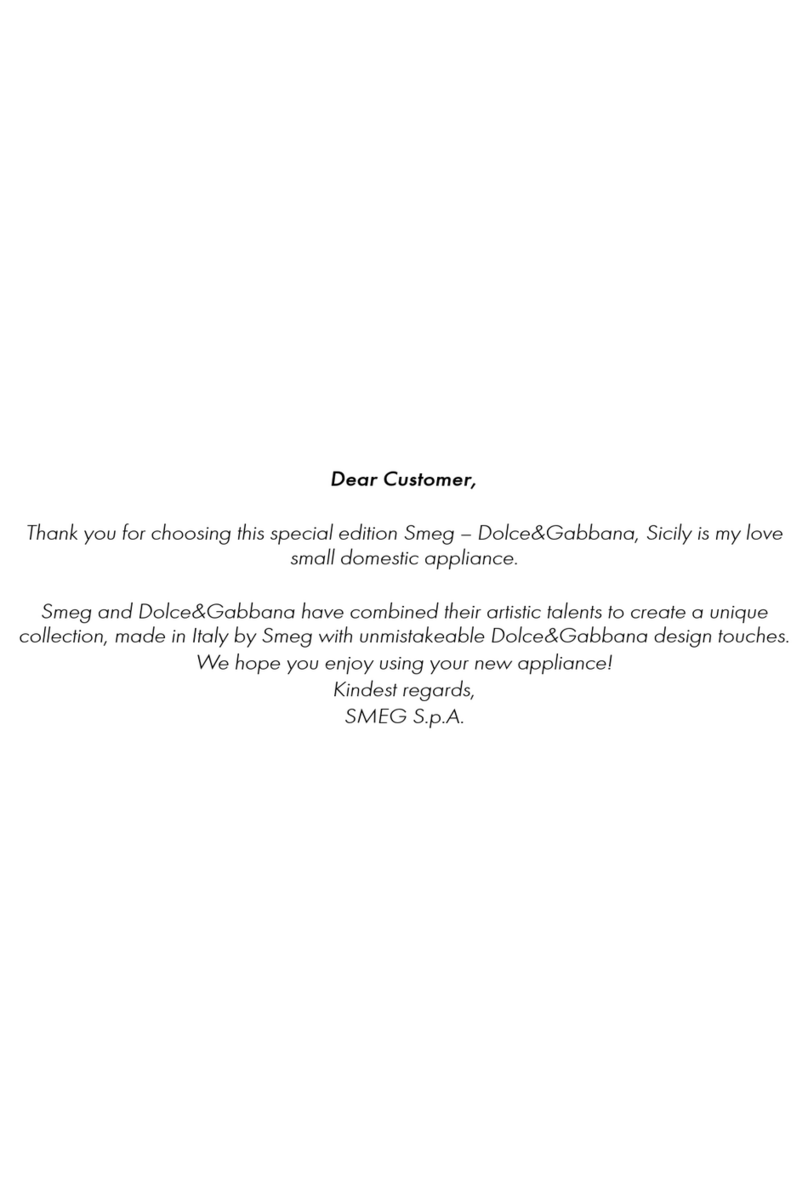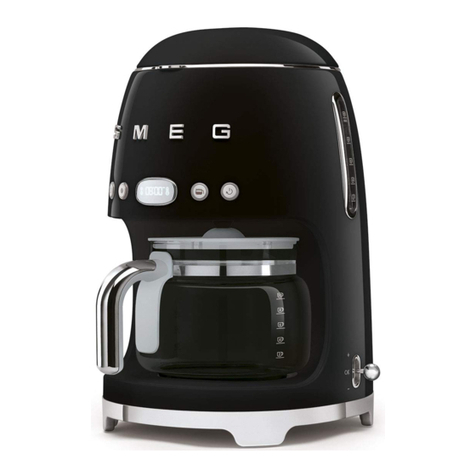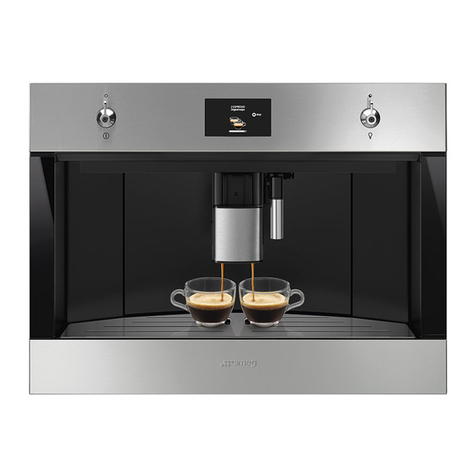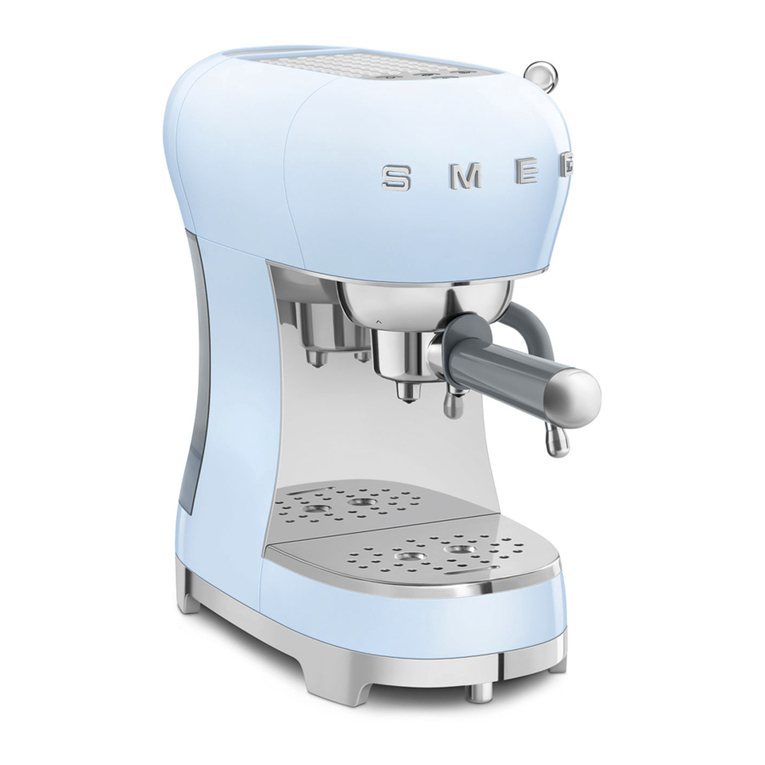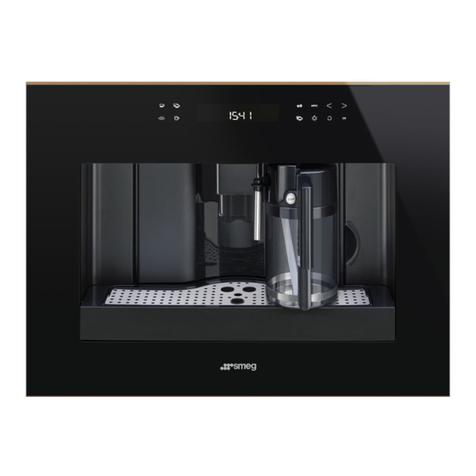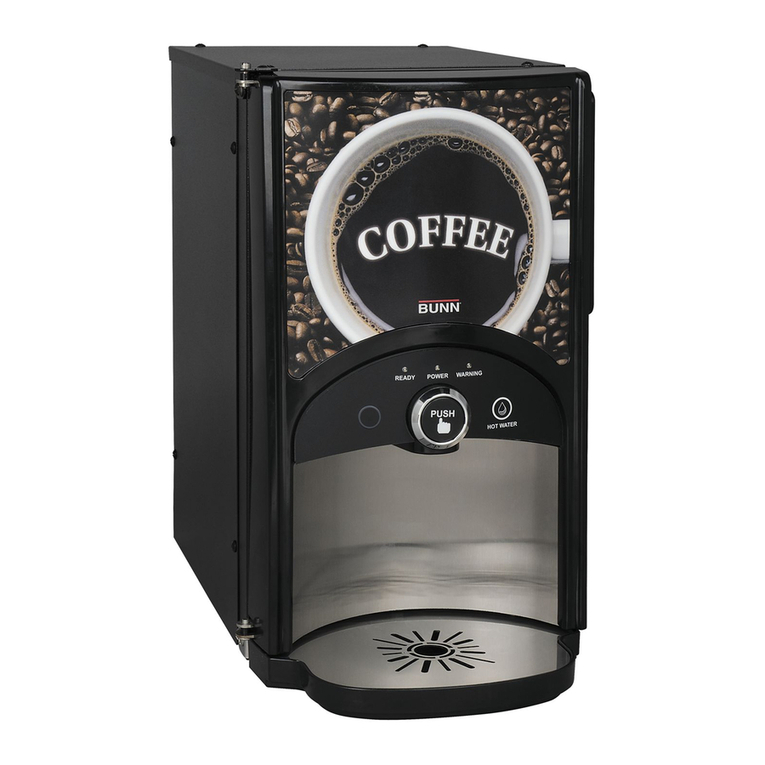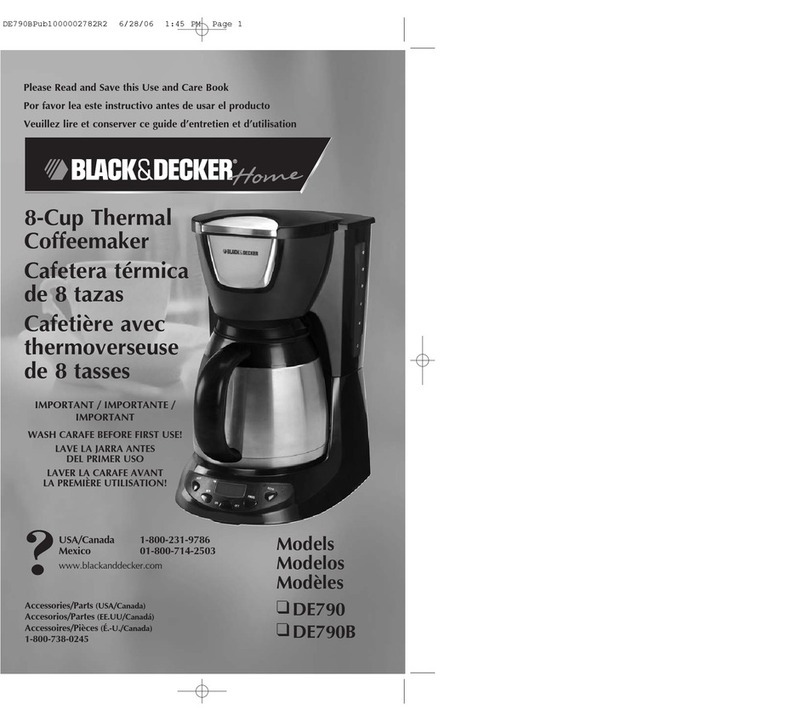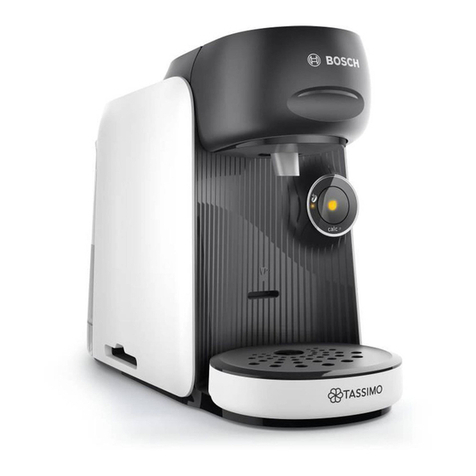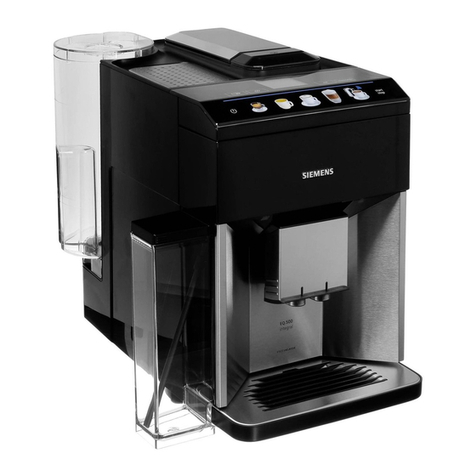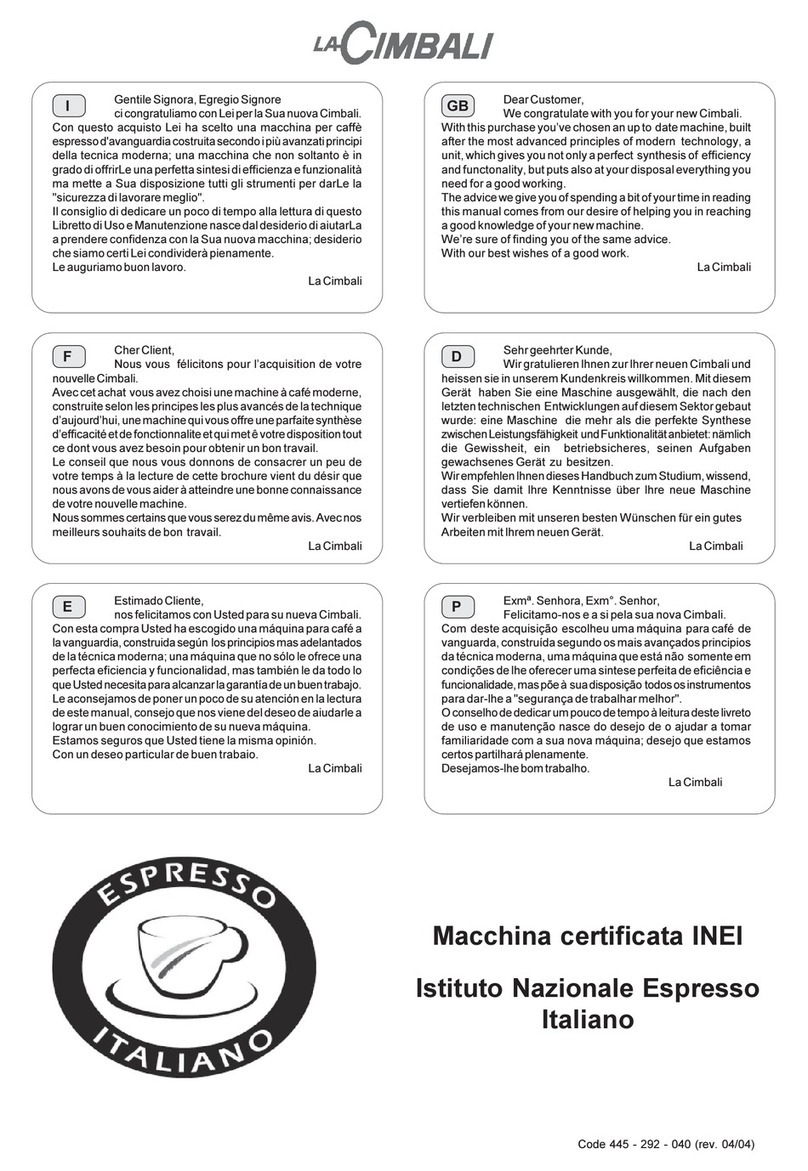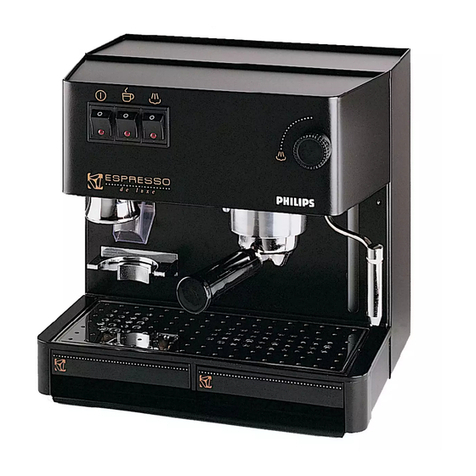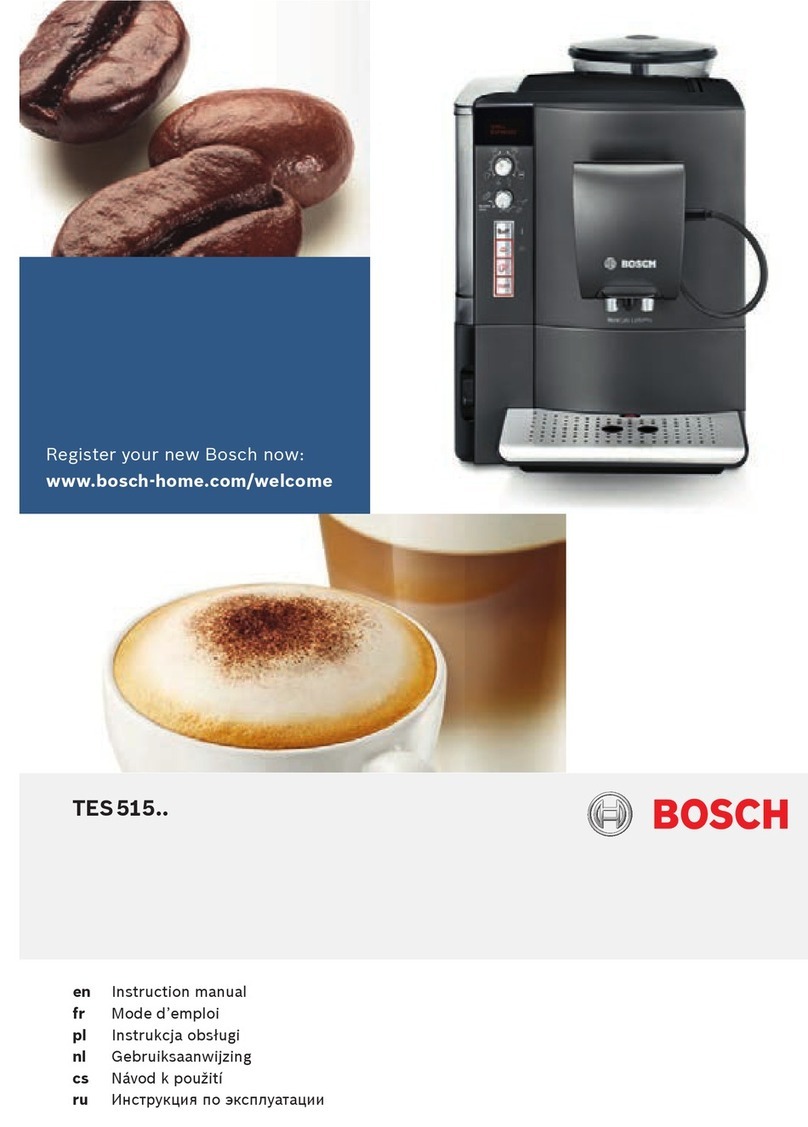
EN - 2
SAFETY
Essential safety recommendations.
Keep these instructions carefully.
Whenever the appliance is
transferred to other persons, they
must also be given these user
instructions.
Danger of Electrocution, since the appliance
operates on electric current, it is necessary to
comply with the following safety warnings:
•
Do not touch the plug with wet hands.
•
Make sure that the power outlet used is always
freely accessible, because only in this way can
it be unplugged when necessary.
•
If you want to remove the plug from the socket,
grasp the plug directly. Do not remove the plug
from the socket by pulling on the cable or with
wet hands.
•
If the appliance should break down, do not
attempt to repair it. Switch the appliance off,
remove the plug from the power outlet and
contact the Smeg Technical After-sales centre.
•
If the plug or power supply cable are
damaged, have them replaced exclusively by
the Technical After-sales centre, so as to prevent
all risks.
•
Do not immerse the appliance, the power cord,
the plug in water or any other liquid.
•
Warning: Danger of injury! Improper use of
the appliance can cause injury.
Before cleaning, disconnect the plug.
•
Do not allow the power supply cable to dangle
over the edge of the table or other surface or
to come into contact with hot surfaces.
Choking hazard due to plastic packaging, keep
the packaging material (plastic bags, expanded
polystyrene) out of the reach of children.
•
Do not position the appliance on or in proximity
of electric or gas cookers, or in a heated oven.
•
Do not wash the appliance in the dishwasher.
Connecting the appliance
Warning!
Make sure that the mains voltage and
the frequency correspond with those indicated on
the data plate on the bottom of the appliance.
Only connect the appliance to a current outlet
installed perfectly with minimum capacity of 10A
and with an efcient earth.
If the plug and power outlet are incompatible,
have the power outlet replaced with a suitable
type by qualied staff.
In order to avoid a hazard due to inadvertent
resetting of the thermal cut-out, this appliance must
not be supplied through an external switching
device, such as a timer, or connected to a circuit
that is regularly switched on and off by the utility.
•
Do not use an adapter.
•
Do not use an extension cord.
•
Do not spill liquid on the power plug and on
the power base.
Failure to observe these warnings can result in
death, re or electric shock.
Important Safeguards
